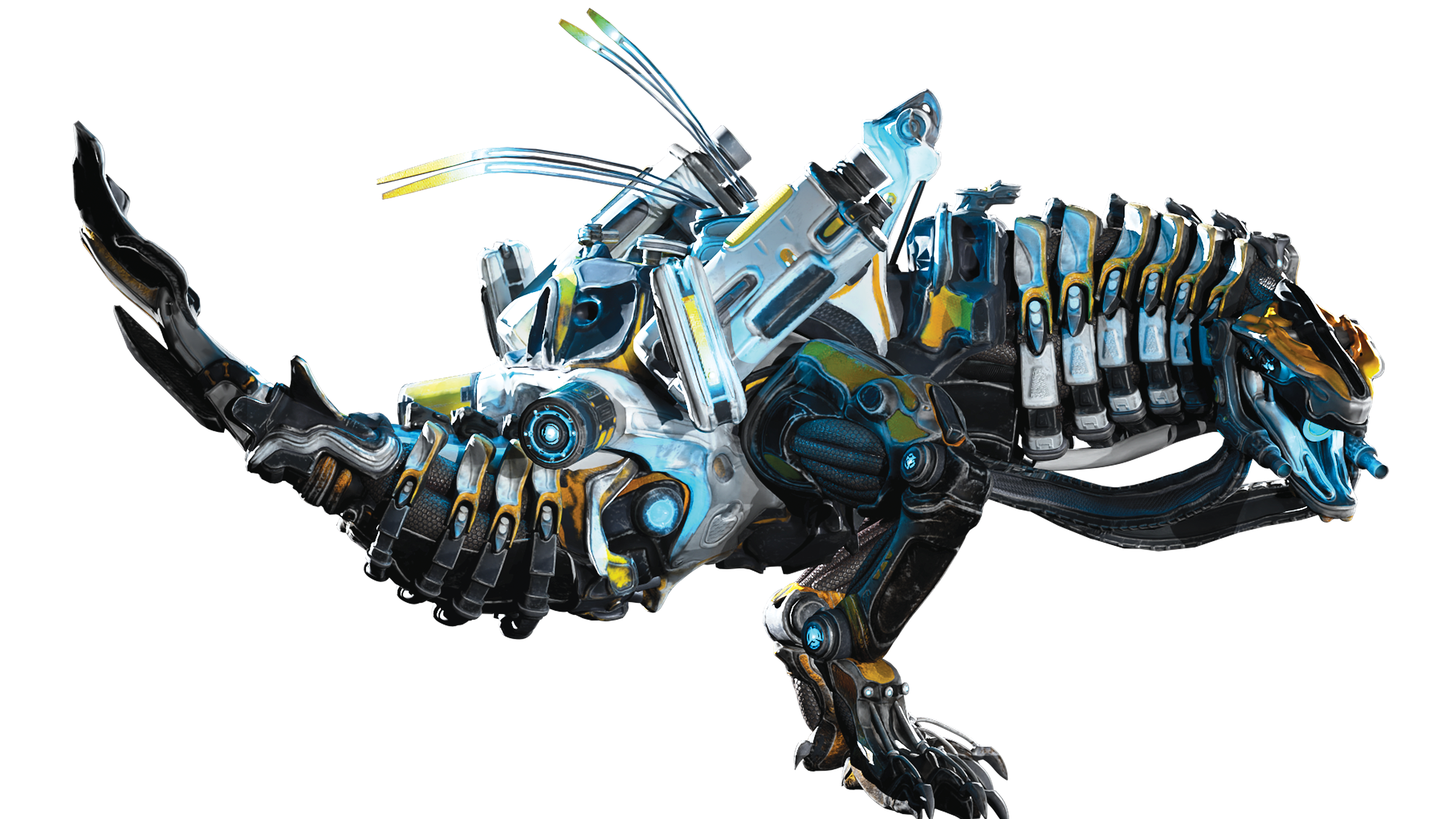On board Star Trek: Discovery
Klingons, holodecks and new worlds: VFX secrets from the latest small-screen Star Trek voyage.
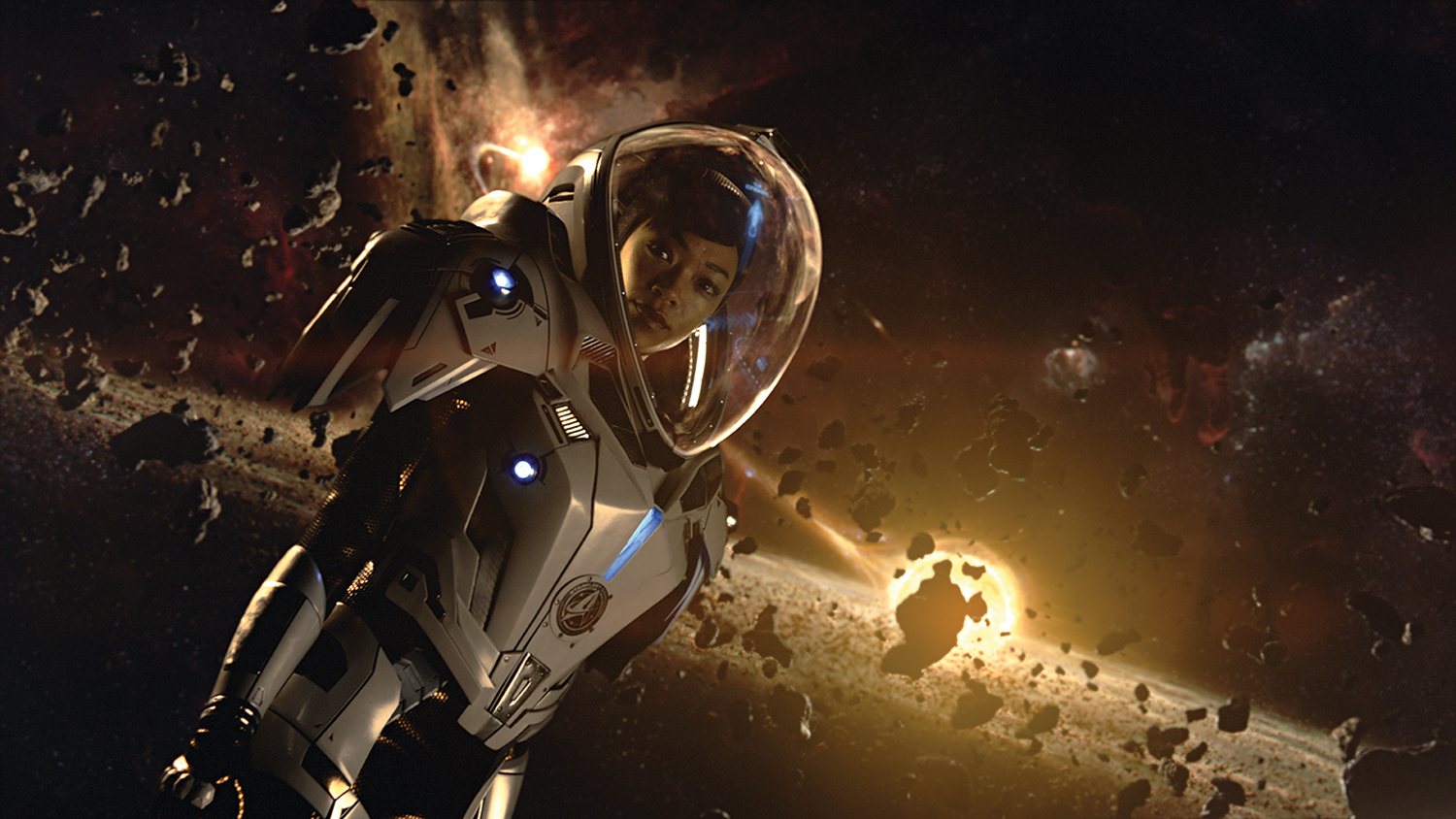
Inspired by Jonathan Swift’s Gulliver’s Travels, American screenwriter and producer Gene Roddenberry sought to explore intellectual themes within suspenseful spacefaring adventures with Star Trek. A cultural phenomenon was born, consisting of seven television series and 13 feature films spanning 52 years. The latest small-screen incarnation is Star Trek: Discovery.
In this article, we board the USS Discovery to learn about the visual effects and 3D art expertise needed to envision a universe consisting of Klingons, alternative realities and holodecks.
Discovery takes place a decade before the original TV show with the primary objective being to honour the legacy of the franchise. “I thought this was a great opportunity, but also daunting,” notes production visual effects supervisor Jason Zimmerman (Sleepy Hollow), who looked after the creation of just under 5,000 shots and received a VES Award nomination for the pilot episode.
Pixomondo handled 1,700 VFX shots, with the Toronto facility responsible for 90 per cent of the work while Los Angeles produced the previs, Frankfurt assisted with creatures, and additional support was provided by Stuttgart; the main vendor collaborated alongside Crafty Apes, Ghost VFX and Spin VFX.
Pipeline notes
“We had to share our Nuke scripts with other companies so had to be careful not to use a lot of our in-house proprietary tools,” states Pixomondo VFX supervisor Mahmoud Rahnama. “Our main 3D package is Maya but for heavy effects stuff we used Houdini, for compositing Nuke and rendering V-Ray.”
Shotgun projects were directly linked between Pixomondo and the client. “Jason could see the status of the shots as we were working on them and give notes right away.”

Previs was essential in planning shots. “When we have full CG shots there is no other way to articulate,” notes Zimmerman. “You need to give the editors, producers and directors something to look at and say, ‘That doesn’t work.’ Even in cases where there are practical elements, previs is done in advance, so on the day you know what will be shot and how it’s going to be accomplished.”
Get the Creative Bloq Newsletter
Daily design news, reviews, how-tos and more, as picked by the editors.
Optimising the workflow was critical in being able to accommodate last-minute episode script rewrites or client notes. “We would quickly model something in low resolution and push it through the pipeline, so at least the director could see the whole space battle with proxy low-resolution geometry and the editors could work with what we had,” states Rahnama. “It was constantly updated by each department so every week you would see the shot in a better state.”
The USS Discovery
“With the Discovery being the namesake of the show, you know that needs to be a hero model,” says Zimmerman. “With the entire fleet you look at it with an eye to what is this asset going to do, how long is it going to be on camera, and how close are we going to be to it? You have to take into consideration what the story points are and then build to that. That being said, you have to be proactive and make sure that the model is ready in case somebody says, ‘Let’s get closer.’ If something is going to break apart or articulate then you have to do that in advance in order to properly rig the asset to do what it is supposed to do.”
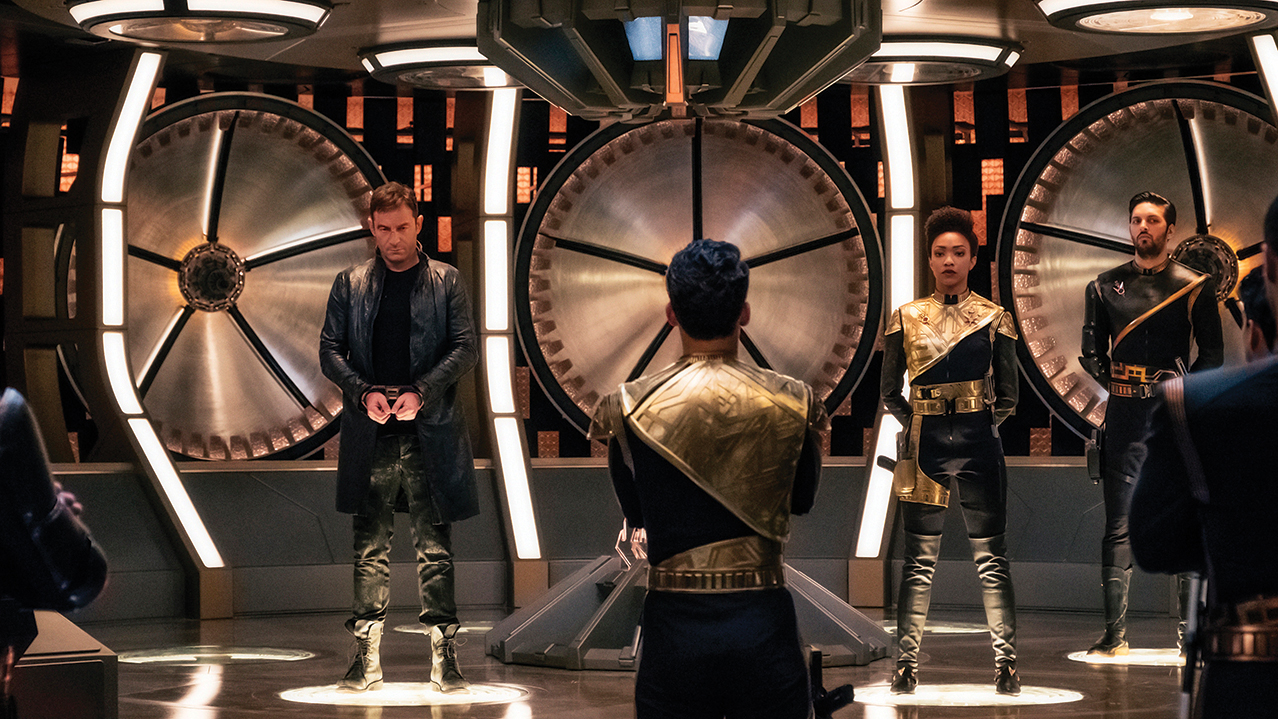
Interior sets were built of the signature Federation starship. “The bridge of the Discovery is what you see,” marvels Rahnama. “Even the Sarcophagus set is massive and beautifully done. Like with any other set we had to extend hallways and ceilings. We did have a digital version of the bridge in case of needing to fly in and out. The Discovery model took a few months to build because we had to make sure every door and hatch worked.”
Building new worlds
“As for the world building it goes back to the legacy of Star Trek, doing a lot of research, working with the art department, and integrating things based on the lighting in the footage,” notes Zimmerman.
“You always start from, ‘What is the story? How long are we going to be there? What are we going to see? What is the scope of the shots?’ A lot of that involves working with the executive producers, the director, and every department to understand what the requirements are. You want to start building worlds and assets concurrently so when you’re putting it into shots you’re not finding what the look is still.”
Conceptualising and executing the various alien species was Alchemy Studios, with CEO Glenn Hetrick overseeing the prosthetic and special effects make-up department, and his business partner Neville Page serving as the lead creature designer. “There’s a fine line with freshening something up and not being offensive,” states Page. “My attempt is to always push things further because it’s easier to rein stuff back afterwards.”
Star Trek: Discovery was not the first time encountering Klingons for the conceptual artist, who previously worked on Star Trek, Star Trek Into Darkness and Star Trek Beyond. “It gave me the opportunity to be ready in terms of research.”

A new workflow was born from Page being transformed into a horned demon as part of a research and development project with Hetrick, to figure out how to take ZBrush into 3D printing into makeup and the steps required.
Benefitting from the reinvented design, creation and execution process were the Klingons. “The 3D prints were done as hard parts and then we would make silicone moulds of them,” explains Hetrick. “Then we would do a clay brush into that mould. The guy sculpting would get the raw forms from the life cast and take the piece with hot clay underneath. They put down the clay and set in the detail like a brow or a neck which was blended into the sculpture.”
Revisions were not a problem. “If we wanted something different it was easy for Neville to go back into ZBrush, change those forms, and print out another shell unique for a main character, such as L’Rell or Kol. The upside to this process was we would have these moulds of 3D-printed parts to make clay out of and you didn’t have to use the whole thing. When House of Mo’Kai Klingons were needed we would come up with a new face or a modular adaption because they are covered with tribal scars.”
Creating creatures
A franchise mainstay are the Andorians. “I took existing features and refined them because that’s what it needs to be sometimes,” says Page.
“It’s evolved.” Several different undercoats of paint were utilised to create a realistic blue skin tone. “Light goes through our skin and bounces back to our eyes,” explains Hetrick. “We have a semi-translucent task colour and translucent layers of paint on top of that. Only the last layer has an opacity to it so that light is passing through layers of colour and coming back to the eye. We were using green blues, true blues and almost a grey. We wanted the Andorians to have an ethereal angelical quality to the skin.”
The boar-like Tellarites changed into something more elegant. “The originals were a pig face mask,” notes Hetrick. “Then there’s an iteration where it looks like the Boarman created by Stan Winston for The Island of Dr. Moreau. They’re hybrid boar humans that are tough and tribal. The hair was used as a visual cue for what their culture might be, but we kept the tusks and pig nose.”
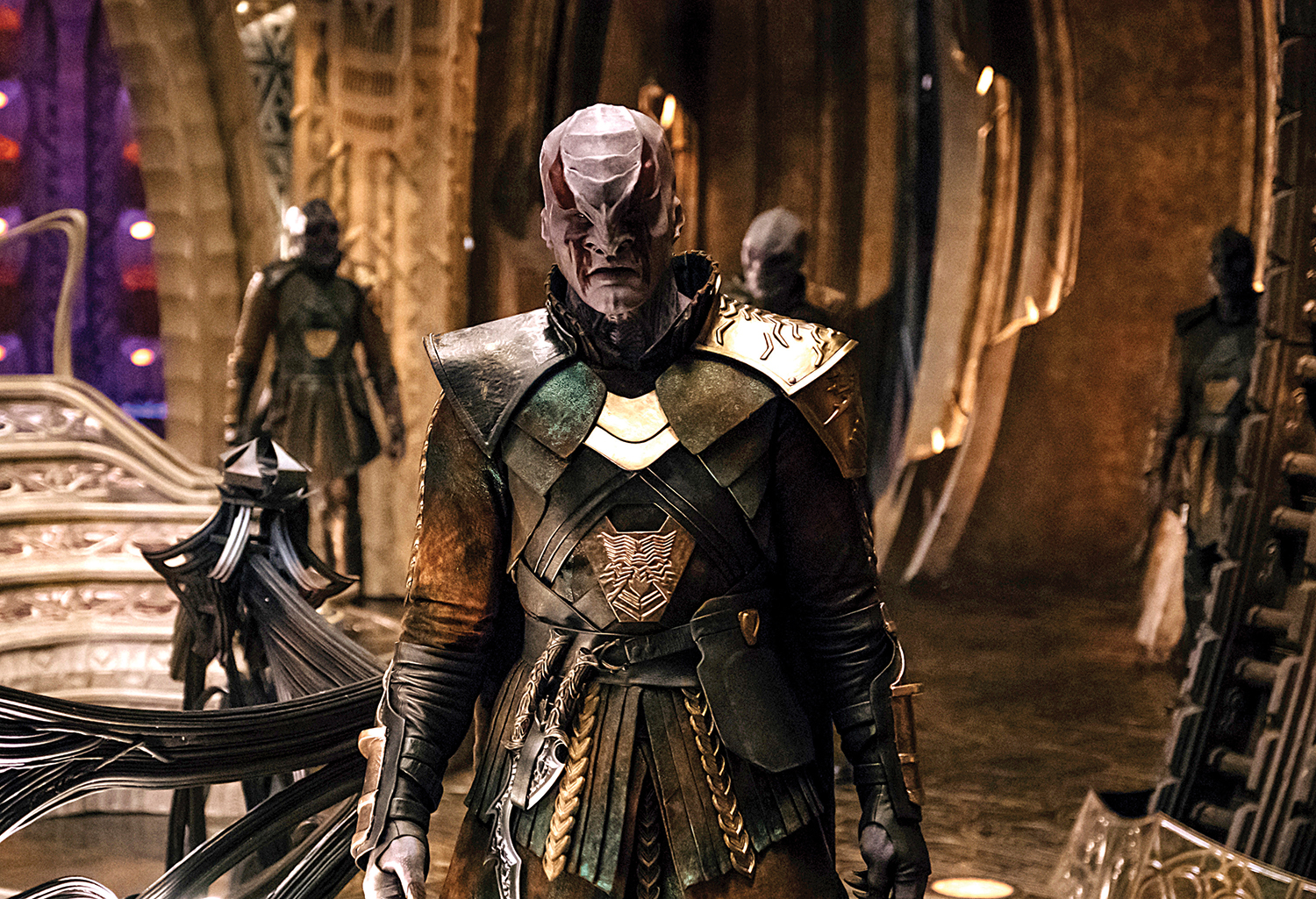
Starfleet science officer Airiam played by Sara Mitich is a synthetic-human hybrid. “They wanted somebody who was an augmented human with robotic-type features, which is a concept designer’s dream,” states Page. “It’s about sustaining the femininity. Airiam is an evolution of Airam, which is Ai for artificial intelligence and ram for random access memory. Spelt backwards it’s Maria, which is the name of the robot from Metropolis.”
The greatest challenge was how to execute a form-fitting, extraordinarily tight makeup that looks like a hard shell. “I had my guys run the entire facial appliance in white silicone,” says Hetrick. “We were able to hide the white edges by having her lips go under the facial appliance that goes right to the edge of her lip.”
A digitally created aquatic mammal makes for a surreal moment. “An alien that I loved was loosely called ‘the space whale’ which they bring onto the cargo bay,” reveals Page. “There’s no organic creature that would ever float in space to our knowledge so when that was given to me as a challenge I ate it up. How do I make sense of that and create attributes that make it viable as an alien creature? Everything was figured out about its diet, reproduction propensity and the ability to navigate in space.”
Travelling at warp speed
A kaleidoscopic folding effect was created for when the Discovery travels at warp speed. “The showrunners and executive producers had that idea well in advance,” explains Zimmerman. “Then we went about figuring out, what does this look like, and how do we make something we can do on a weekly basis? We started with concepts from the art department, worked on a bunch of different ideas, and narrowed it down from there.”
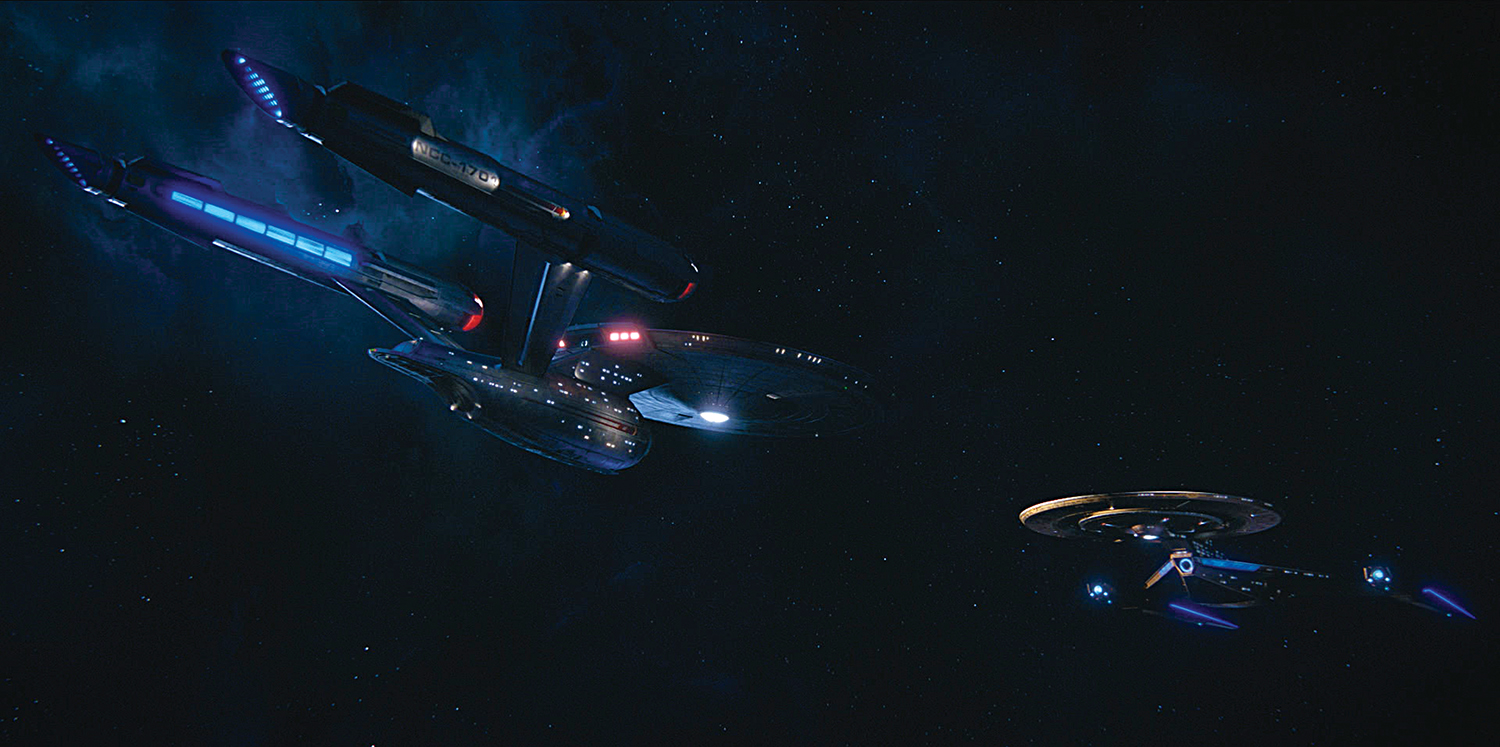
One of the heaviest visual effects shots was when the de-cloaking Klingon cleave ship slices the USS Europa in half. “We only had a few weeks to finish that sequence and that was part of the Comic-Con trailer as well,” says Rahnama. “Our effects artists came up with a procedural way of creating metal tearing and from that you get sparks, fire and explosions.”
Glenn Hetrick is part of the Star Trek loyal fanbase. “The passion for the franchise creates an impetus in the level of design and the physical work that we’re doing on Star Trek: Discovery.” Mission accomplished for Zimmerman.
“Every episode has something in there that we’re proud of. It’s such a big show from a historical standpoint in terms of what it means to visual effects and sci-fi. It’s a team effort. All of the departments brought a passion and energy to this that I don’t think I have ever experienced working on a show before. Having an ability to be part of that has been truly an honour.”
This article was originally published in 3D World, the world's best-selling magazine for CG artists. Buy issue 234 or subscribe.
Read more:

Thank you for reading 5 articles this month* Join now for unlimited access
Enjoy your first month for just £1 / $1 / €1
*Read 5 free articles per month without a subscription

Join now for unlimited access
Try first month for just £1 / $1 / €1

Trevor Hogg is a freelance video editor and journalist, who has written for a number of titles including 3D World, VFX Voice, Animation Magazine and British Cinematographer. An expert in visual effects, he regularly goes behind the scenes of the latest Hollywood blockbusters to reveal how they are put together.
